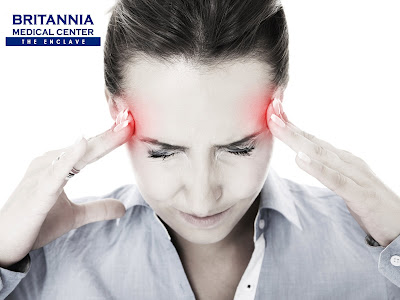Many treatments are available for headaches, as evidenced by the abundance of advertisements on radio and television, in magazines, and on the internet. What works well for one person may or may not work well for another, so it is a good thing there are so many choices. Here is an overview of some of the treatments being used for headaches.
Medications
The most commonly used medications for treating headaches are the non-steroidal anti-inflammatory drugs, or NSAIDs.
These are drugs such as ibuprofen, naproxen, and aspirin. A variety of over-the-counter and prescription strength NSAIDs are on the market right now. The major problem with NSAIDs is that overuse can lead to ulcers and gastrointestinal bleeding. Acetaminophen, or Tylenol, can be used more regularly but is not always as effective in treating more severe headaches.
Migraines can be treated with a number of other medications including Ergots (Ergotamine), Triptans (Imitrex and Maxalt, for example), Butalbital combinations (Fioricet is the most commonly used), anti-nausea drugs, and narcotics (Percocet, Vicodin, and the like). Some antidepressant medications (such as amitriptyline), and anti-epileptics (such as Topamax) are also being used, especially in chronic headaches.
While many common medications are used at the onset of a headache to relieve symptoms (abortive), there are also medications used regularly to reduce the frequency or intensity of headaches (prophylactic). The calcium-channel blocker verapamil, beta-blocker propranolol, and anti-seizure medication Valproate are three examples of prophylactic medications.
Patients and physicians can together determine which of these medications makes the most sense based on symptoms, side effects and other medical conditions.
Complementary and Alternative Medicine (CAM)
Depending on the type of headache and the specific symptoms, CAM treatments are gaining popularity in dealing with pain. Acupuncture involves the insertion of tiny needles into specific points to promote energy flow and pain relief. Biofeedback is a process where patients learn to interpret their body’s signals and then promote a natural response. Chiropractic and Osteopathic Manipulative Treatments involve adjustments made to the spine and musculoskeletal system to correct imbalances. Hypnosis and visual imagery are also being used to treat various types of headaches. Homeopathy looks to assess specific symptoms and provide remedies that address each symptom individually or as a group.
Physical Therapy
If your headaches are being caused by muscle tension, physical therapy may be prescribed to address specific muscular issues. Treatment protocols vary, but expect regular treatments for a few weeks at a time, with adjustments made depending upon your improvement.
Lifestyle Changes
Since stress and other issues in our daily lives often trigger headaches, learning to manage these issues is an effective strategy in treating headaches. Learning to relax and relieve stress is an important first step. Many things can help, but learning to take time for yourself is one of the best things you can do to relieve stress. Exercise will not only help reduce stress, but exercise also causes endorphin release, and endorphins are your body’s natural pain killers. Finding food and drinks that trigger headaches, and then learning to avoid those, will help reduce the number of headaches you experience. Tyramine is an amino acid present in many rich foods that is a known cause of headaches. Learning to follow a low-tyramine diet may be beneficial.
Whatever your ultimate treatment may be, Britannia Medical Center-The Enclave can help choose the most effective treatment strategies while minimizing complications and side effects. If there are questions and concerns call us at 0925-567-5329 • 0908-865-5662 • 0917-566-1932 • 458-0717 and schedule a consultation today.

No comments:
Post a Comment